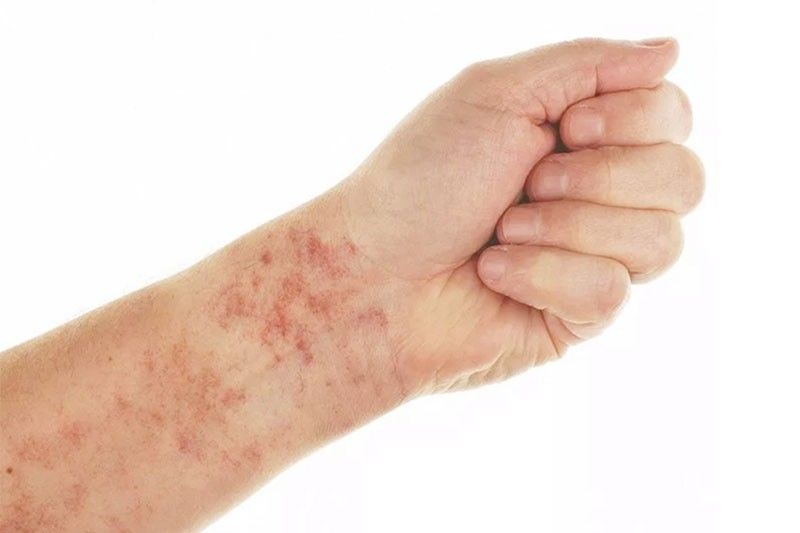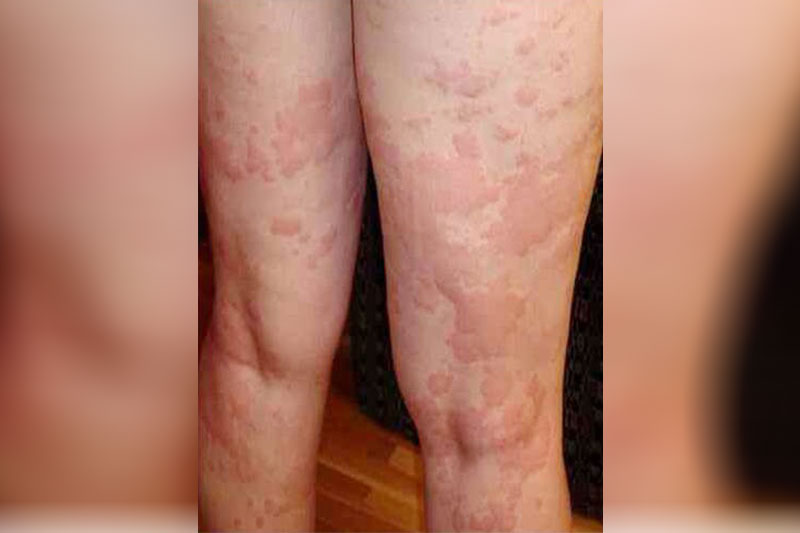COVID’s devastation on the body includes the skin


As the number of confirmed cases of COVID-19 surges past 2.5 million globally with deaths at 177,115 (as of April 22), clinicians and pathologists are struggling to understand the damage it’s wrought. They realize that although the lungs are ground zero, its reach can extend to many organs: “Its viciousness is breathtaking and humbling.”
When an infected person expels virus-laden droplets and someone else inhales them, this coronavirus enters the nose and throat. It finds a welcome home in the lining inside the nose. Cells there are rich in a surface receptor (pandikit) called angiotensin-converting enzyme 2 (ACE2), which the virus requires to enter the cell. Once inside, the virus hijacks the cell’s reproductive machinery, making myriad copies of itself and invading new cells.
A virus can copy anything it wants and can even make itself comfortably adapt to the environment where it chooses to stay while killing the normal cells of your body.
As it multiplies, an infected person may shed copious amounts of it, especially during the first week or so. Symptoms may be absent or the infected may develop fever, dry cough, sore throat, loss of smell and taste, or head and body aches.

If the immune system does not fight back, the virus then marches down the windpipe to attack the lungs, where it can turn deadly. This is because the thinner, distant branches of the lung’s respiratory tree end in tiny air sacs called alveoli, which are also rich in ACE2 receptors. The virus can attach itself again and wreak havoc.
Normally, oxygen crosses the air sacs into the capillaries, tiny blood vessels that lie beside them. The oxygen is then carried to the rest of the body. COVID infection disrupts this healthy oxygen transfer. The front liners of our immune system, white blood cells, release inflammatory molecules called chemokines that summon more immune cells to target and kill virus-infected cells, leaving a stew of fluid and dead cells — pus — behind. This results in pneumonia: coughing, fever and rapid, shallow breathing.
Some COVID-19 patients recover, sometimes with no support other than oxygen. But others deteriorate, often suddenly, developing a condition called acute respiratory distress syndrome (ARDS). The oxygen levels in their blood plummet and they struggle even harder to breathe. On X-rays and computed tomography scans, their lungs are riddled with white opacities (areas without air). Commonly, these patients end up on ventilators. Many die. Autopsies show their alveoli became stuffed with fluid, white blood cells, mucus and the detritus of destroyed lung cells.
The invader’s impact does not end there. The body’s response to destroy it can injure even more organs. Clinicians suspect that the driving force in many gravely ill patients’ downhill trajectories is a disastrous overreaction of the immune system, or cytokine storm.
Cytokines are chemical signaling molecules that guide a healthy immune response, but in a cytokine storm, levels of certain cytokines soar far beyond what’s needed, and immune cells start to attack healthy tissues. Blood vessels leak, blood pressure drops, clots form and catastrophic organ failure can ensue.
Cardiovascular damage occurs. Kidneys, liver, blood vessels, the skin and brain are affected as well. Blood clots can break apart and land in the lungs, blocking vital arteries — a condition known as pulmonary embolism that can kill COVID-19 patients.
Brain incursion via the nose can reach the olfactory bulb, inducing loss of smell. Clots from arteries can also lodge in the brain, causing a stroke.
Some people with COVID-19 briefly lose consciousness. Doctors wonder whether in some cases, infection depresses the brain stem reflex that senses oxygen starvation, which explains why some patients are not gasping for air, despite dangerously low blood oxygen levels.
COVID-19 can also infect the lining of the lower digestive tract, where ACE2 receptors are abundant. Viral RNA has been found in as many as 53 percent of patients’ stool samples, raising the unsettling possibility that it could be passed on through feces. As of this writing, there’s no evidence that fecal transmission can occur.
Others develop conjunctivitis — pink, watery eyes, others had elevated levels of enzymes indicating injury to the liver or bile ducts. But this may also be due to drugs or an over-driven immune system.
Lastly, cutaneous or skin manifestations have been reported in COVID-19 patients:
• Generalized sporadic red rash erupting along the trunk or extremities that are typically transient and resolve on their own. They may be very itchy. Sometimes this can be confused with dengue.
• Petechiae. Pinpoint bleeding underneath the skin that does not disappear when pressure is applied.
• Generalized urticaria are wheal-like rashes that can coalesce together to form large plaques.
• Vesicular eruption mimicking varicella (chicken pox) blisters.
• Vasculopathic presentations. Frostbite-like lesions on the feet and hands – multifocal, often asymmetric patches — manifest in two to three days. It then evolves to the formation of blisters, to bruises or necrosis (black, dead skin). Sometimes they appear as red, purplish bumps on the feet and hands that evolve into hemorrhagic bullae, or develop a blackish crust due to damage to the lining of the blood vessels, leading to clots that block blood vessels. These can lead to ulcer or gangrene formation, and death.
• Acute hemorrhagic edema in infants. Sudden swelling of limbs with patches of bruises in a well-appearing child, before the rash dissipates in 48 hours along with the swelling.
• Erythematous large patches scattered all over the body that may be slightly itchy.
• Localized extreme pruritus, like in the wrist or ankle areas only.
This map of the devastation that COVID-19 can inflict on the body is still just a sketch. It will take years of painstaking research to sharpen the picture of its reach.
* * *
For inquiries, call 8401-8411 or 0917-497-6261, 0999-883-4802 or email gc_beltran@yahoo.com. Follow me on facebook@dragracebeltran.



















